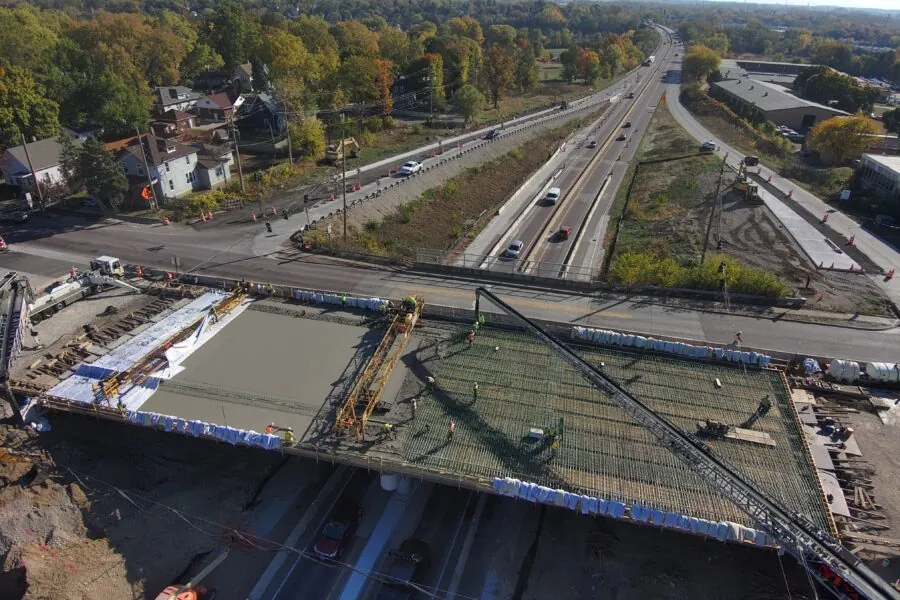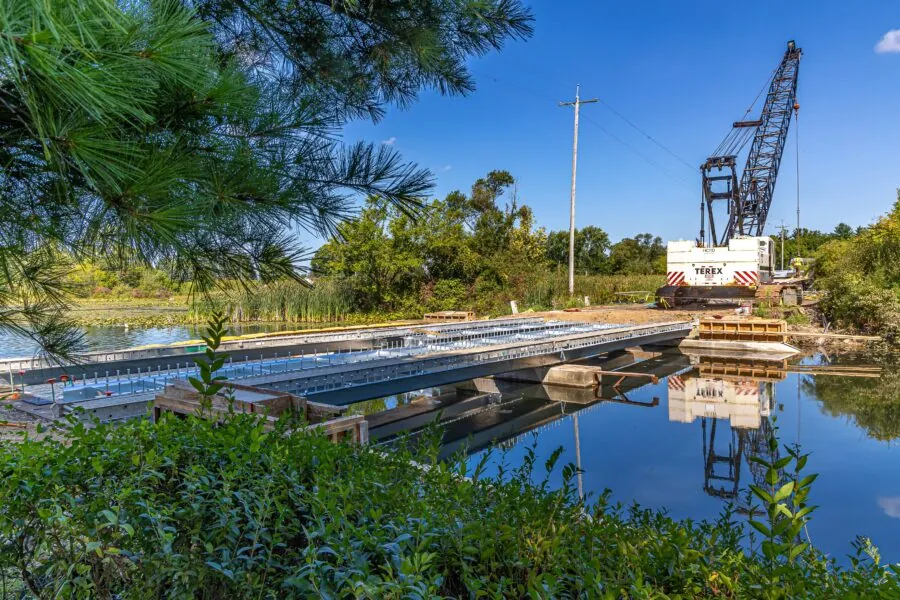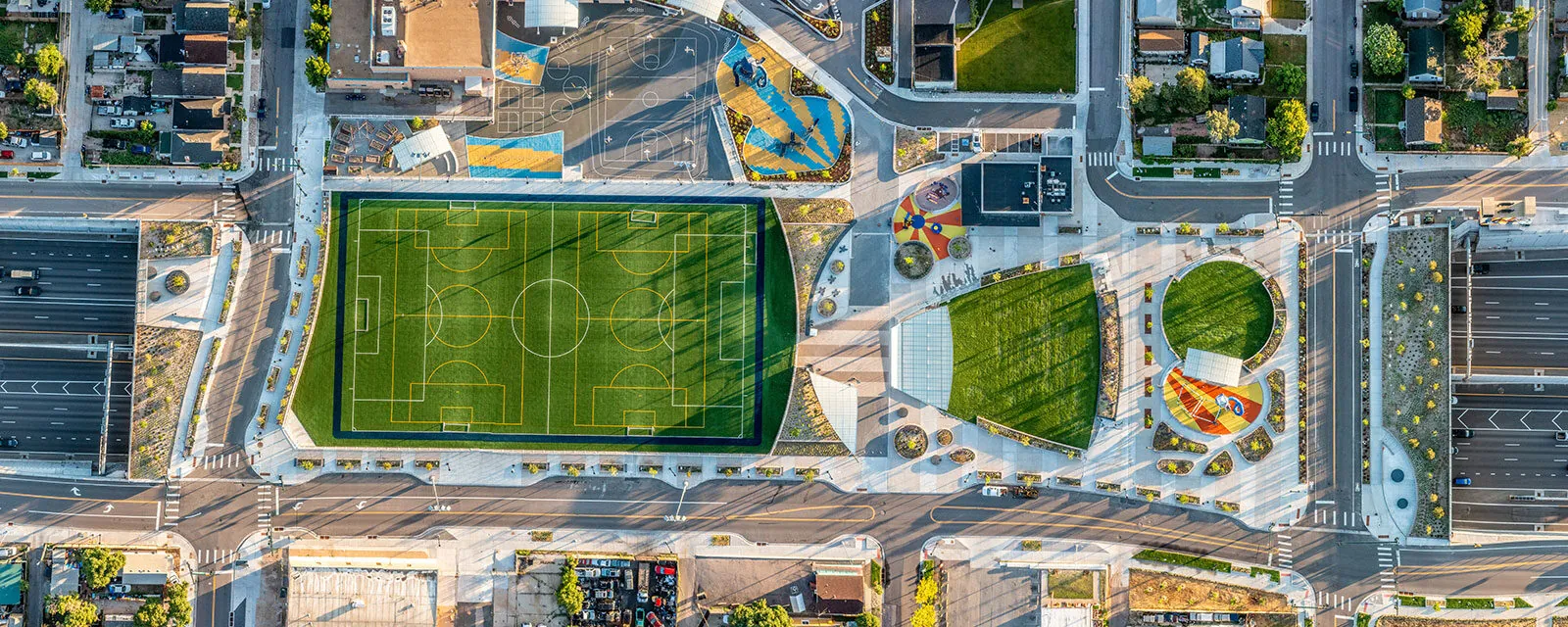
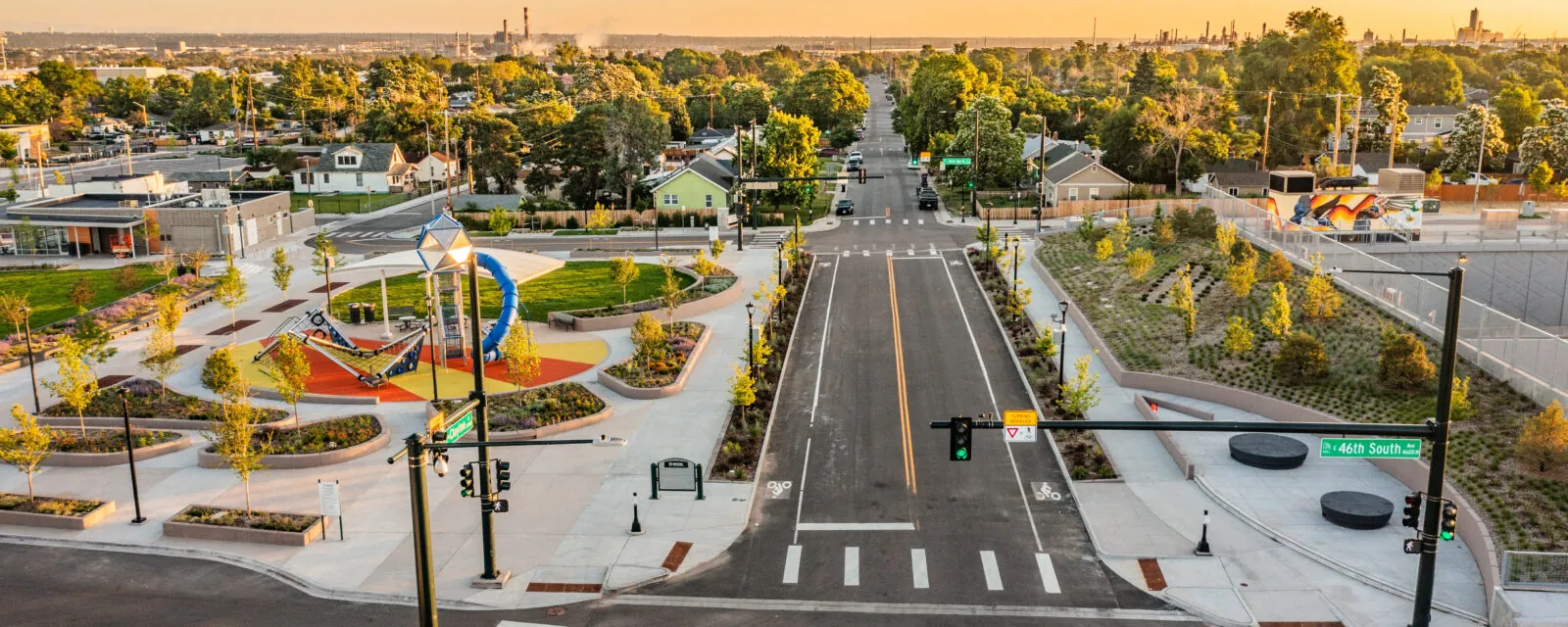
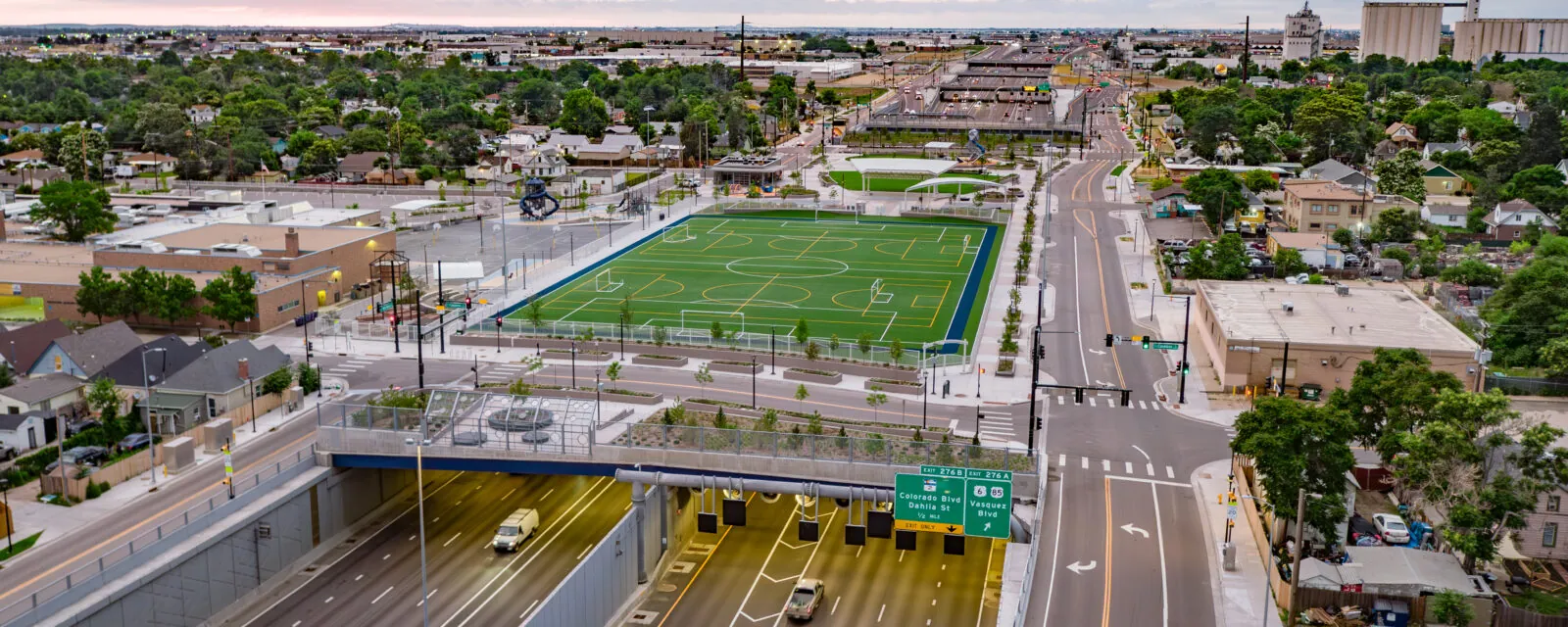
Central 70 Reconstruction P3
Project Details
Delivery Method
Design-Build-Finance-Operate-Maintain (DBFOM)
Construction Value
$1.2 billion
Awards
Honor Award - National Engineering Excellence, ACEC, 2024
Grand Conceptor Award, ACEC CO, 2024
28th Annual “Best in Colorado” Asphalt Pavement Awards Program, 2022
Best in Colorado, Asphalt Paving Award - Urban Highway New or Reconstruction, CDOT, 2021
Central 70 is one of the most impactful projects of our generation, projected to result in $18 billion of new economic activity in Colorado by 2040. Consisting of reconstructing 10 miles of I-70, this $1.2 billion project was initiated to address local and regional congestion and to revitalize the local economy by reconnecting communities on either side of the freeway that had been separated by a 2.5-mile-long viaduct since the 1960s. The attention it harnessed called for the largest public outreach undertaking in Colorado’s history. After 15 years of gathering public input, community needs were translated into more than 150 commitments to carry through the entire delivery process. The Colorado Department of Transportation (CDOT) turned to RS&H to identify and mitigate risk from early project development all the way through closeout and to collaborate with the developer, Kiewit Meridiam Partners (KMP), to build an exciting and long-lasting project. Central 70 has already improved transportation facilities and connectivity of the adjacent residential communities and has enhanced system reliability and capacity, facilitating the movement of people and goods locally, regionally, and nationally.
The alignment of the new tolled lanes of I-70 was lowered to reconnect residential communities that had been separated by a viaduct for 60 years, boosting local, regional, and national mobility.
Doing right by the local community
The project implemented innovative approaches to raise public awareness, which has resulted in multiple awards from the American Association of State Highway and Transportation’s Committee on Transportation Communications and the Public Relations Society of America. It also instilled excitement around the construction industry in younger generations. The project team has hosted nearly 90 tours, including middle school, high school, and college students. A design advisory group was created to unite the neighborhoods and communities, offer them a voice in the project, and solicit input on design elements. As part of a new Federal Highway Administration (FHWA) pilot program, the project team also committed to hiring 760,000 hours of its workforce locally. Over 650 locals were hired and contributed more than one million hours collectively. The Central 70 project team also utilized FHWA grants to create an on-the-job (OTJ) training center years before the start of construction to teach community members the necessary skills they would need to join the industry. These training efforts helped develop a skilled local workforce that is positioned for career advancement opportunities.
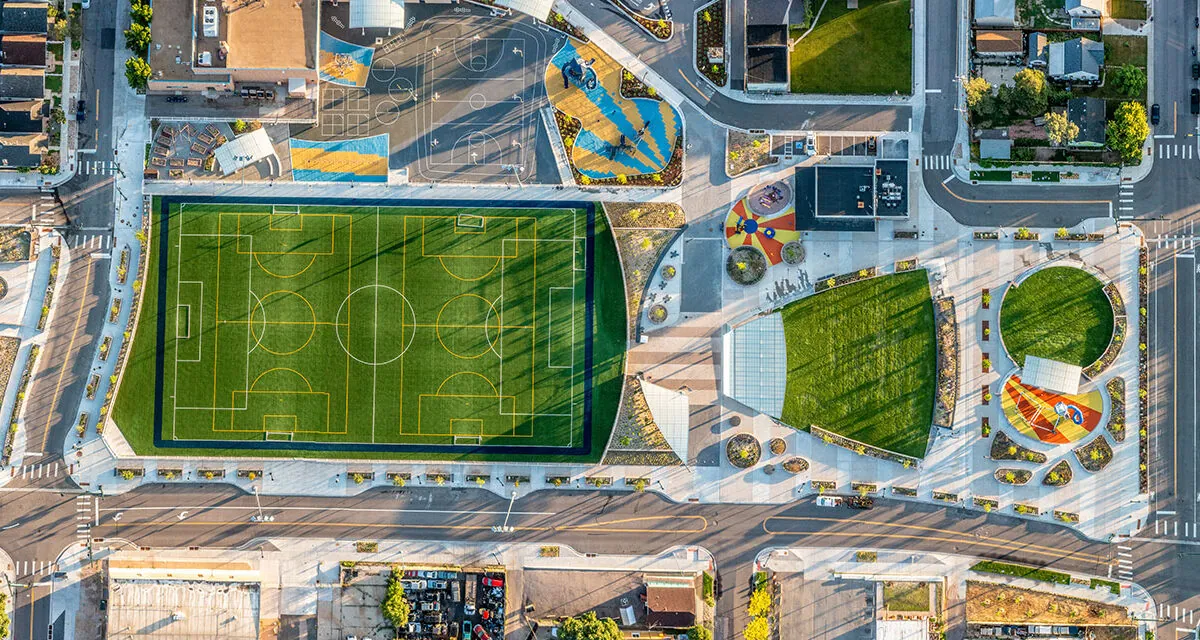
Residents participating in the design advisory group voted on design elements for their new four-acre park, including colors and art.
Navigating construction complexities
Many of the 150 community commitments resulting from CDOT’s unprecedented public outreach efforts drove design decisions that greatly increased construction complexity. Some of these commitments included maintaining three lanes of traffic during peak hours for approximately 200,000 vehicles per day, maintaining access between residential communities, and constructing a four-acre park over a section of the lowered I-70 to reconnect the communities of Elyria and Swansea. RS&H worked with KMP to navigate safety aspects and quality of construction within these constraints, kept the community informed, and mitigated sources of risk.
To achieve project goals within these constraints, the construction sequence started with at-grade cross-street bridges to maintain community connections. Construction required load testing of the existing viaduct to ensure its stability, phased excavation under it, and girder placement using a hydraulic platform trailer to overcome the limited overhead clearance. The new I-70 lanes were then excavated under the new cross-street bridges and existing viaduct. The viaduct was demolished in three months; all asphalt and rebar from the viaduct were recycled, and the crushed concrete was used as the base layer for the newly paved I-70 lanes. RS&H reviewed and provided improvements to the safety-critical demolition plan to protect live traffic, the new cross-street bridges, active train tracks, and surrounding residential and commercial buildings inches away. The team continually surveyed and monitored the viaduct to maintain safety during all operations. In addition, RS&H worked with three separate railroad companies to help them maintain operations using temporary track segments while new railroad structures were built, including a bridge next to the busiest rail yard in the Denver Metro Area.
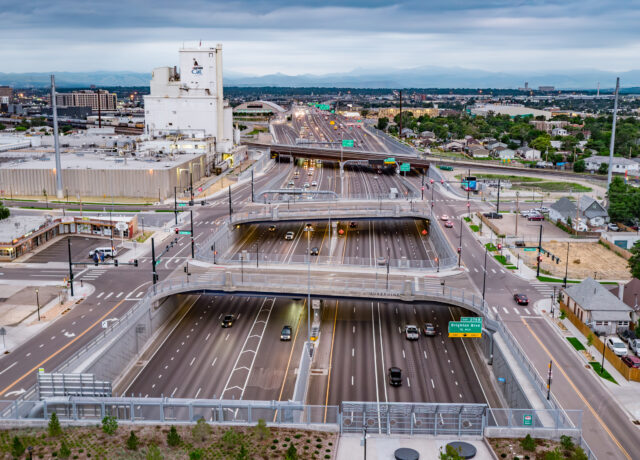
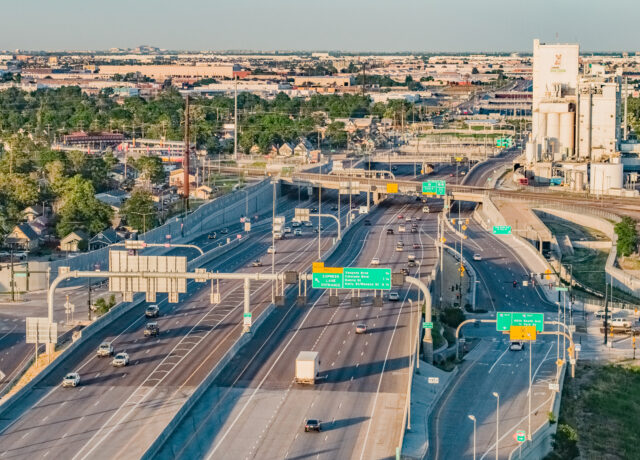
Central 70 required advanced environmental testing, monitoring, and remediation programs due to the presence of two superfund sites. These requirements included air quality and groundwater testing, noise restrictions, and soil testing to determine reusability. Air quality monitoring continuously tracked construction dust levels and provided real-time data available to the public. Water misters were used to control dust, especially during viaduct demolition. Two million cubic yards of soil were excavated and tested to determine usability. Encounters with groundwater during the construction of nearly 1,800 drilled shafts required containment. Soil cement mixing was also implemented to prevent groundwater infiltration into the stormwater system and pavement section. The team also safely removed 56 buildings with lead and asbestos-containing materials.
RS&H provided audits to aid executive management with timely and informed decisions and integrated the public information officer to coordinate community outreach and communicate to the area at large effectively. RS&H worked with the contractor and utility companies to achieve zero claims or delays on all 468 utility relocations. Central 70 was delivered to CDOT one month ahead of schedule.
Bonus Content
The three most important aspects of the Central 70 cover top project construction were the tunnel system, commissioning and quality assurance, and constructing the cover top. Download our exclusive checklist for a deeper look into the best practices for a successful project.

